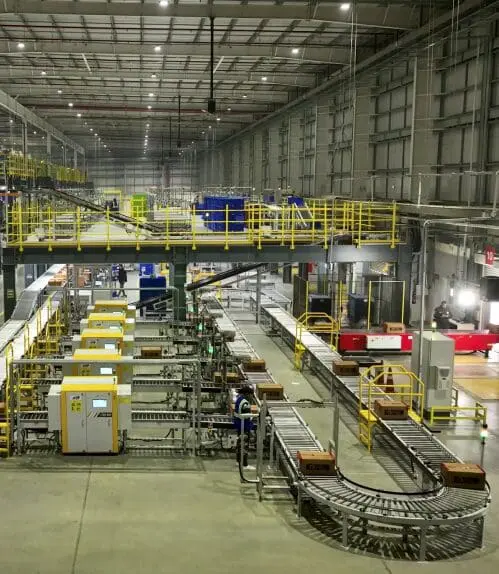Table of Contents
Airports facilitate the passage of millions of passengers daily, making them essential hubs in the worldwide transportation network.
Airports have had to come up with creative ways to meet the demands of passengers due to the rapid growth of technology and the evolving needs of travellers in recent years.
This technological revolution aims to make airports more resilient, efficient, and user-friendly by utilising data analytics, machine learning, and smart technology in addition to airports investing in automation of manual procedures.
| The Evolution Of Airport Technology Self-Service Technologies: To reduce wait times and enhance passenger flow, more than 80% of airports globally intend to invest in self-service check-in kiosks, baggage drop areas, and mobile app services by 2023. Biometric Identification: Due to the increased focus on security and convenient travel, the worldwide market for airport biometric systems is anticipated to reach $1.7 billion by 2025. Artificial intelligence (AI): From 2020 to 2025, airport operations are expected to develop at a compound annual growth rate (CAGR) of 12.3%. AI applications range from chatbots for customer service to predictive analytics for maintenance and crowd control. |
Why Are Airports Investing In Automation – Top 9 Reasons
Airports around the globe are increasingly turning to automation to address several critical operational and customer service challenges.
Technological developments and evolving passenger expectations, which prioritise efficiency gains, improved passenger experiences, safety and security, and increased operational resilience, are the driving forces behind this shift toward investing in automation.
Here’s a technical look at these aspects in more detail:
1. The Drive for Efficiency
Airports are deploying self-service kiosks and biometric baggage systems to streamline the check-in and baggage handling processes. It reduces manual intervention, thus reducing the potential for human errors.
On the back end, the Resource Management Systems powered by Artificial Intelligence and machine learning algorithms predict passenger flow, optimise gate assignments, and enhance airport maintenance operations.
These systems significantly reduce energy consumption by utilising sensors and predictive analytics to modify the lighting, HVAC, and ventilation settings in response to real-time data, including occupancy levels and outside weather.
2. Enhancing Passenger Experience
Airports use biometric identification systems, like fingerprint scanning and facial recognition, to expedite and streamline security checks and boarding procedures.
Passengers can receive personalised messages, wayfinding assistance, and real-time flight information from interactive digital signage powered by artificial intelligence.
3. Safety and Security
Advanced screening technologies, comprising automated screening lanes equipped with CT scanners, speed up the security procedure and enhance the ability to identify prohibited objects.
High-definition cameras and AI-powered analysis are added to surveillance systems, which monitor any suspicious activity and misplaced luggage at the airport.
Additionally, sophisticated cybersecurity measures are in place to protect against digital
threats, safeguard passenger data and ensure the integrity of airport operations.
4. Operational Resilience
Predictive maintenance, enabled by IoT sensors, allows airports to anticipate equipment failures before and avoid downtime, ensuring the efficiency of operations. Let’s dive deeper into how they help to enhance operational resilience and improve consistency:
- Quick Decision-Making and Assessment: Automated systems play a critical role in quickly determining how disruptions will affect operations. Analysing data quickly speeds up decision-making, enabling airport operations to adjust to unanticipated events effectively.
- Enhanced Communication: Communication is greatly aided by the same automated systems that evaluate the effects on operations. They make sure that all pertinent parties—airport workers, airlines, and passengers—are informed in a timely and accurate manner, which reduces confusion and improves coordination during disruptions.
- Adaptable Infrastructure: Automated Docking Systems enable airports to smoothly manage unforeseen increases in aircraft movements by handling aircraft at gates quickly and efficiently. They also reduce turnaround times and enable airports to handle unexpected increases in aircraft movements smoothly.
5. Seamless navigation and retail experiences
Airport automation technology, such as AI-driven wayfinding systems, offers travellers on-the-spot real-time navigational support.
Travellers’ experience is improved with interactive maps on smartphone apps or digital kiosks showing them the quickest paths to gates, lounges, and amenities.
Automated retail solutions, such as self-service checkout and personalised digital advertising, streamline the shopping experience.
6. Enhanced surveillance and monitoring through AI
AI-enhanced surveillance significantly improves security and operational efficiency. High-resolution cameras coupled with AI algorithms detect unusual behaviours or crowd density issues, triggering alerts for immediate action.
This technology not only bolsters security but also aids in managing passenger flows and preventing bottlenecks, ensuring a smoother airport experience.
7. Sustainability Efforts
- Energy Efficiency: Automation maximises energy use in the lighting and HVAC systems, lowering the airport’s carbon impact. Minimal energy waste is ensured by smart systems that adapt in real-time to changes in occupancy and outside conditions.
- Waste Management: Airports may manage waste more efficiently and meet environmental sustainability targets by implementing automated waste sorting and recycling procedures.
- Sustainable Transportation: To support larger sustainability goals, electric, automated ground vehicles minimise emissions and enhance the air quality around the airport.
Addverb’s Focus on Sustainability – Also Read
8. Convenience & Control
- Passenger Empowerment: Self-service alternatives give travellers greater control over their journey, reducing wait times and raising satisfaction levels. These options range from luggage drop-off to boarding.
- Customised Retail and Dining Recommendations: Automation makes it possible to provide customised retail and dining recommendations to travel information, which improves passenger experience at airports in general.
9. Cost reduction
- Operational Efficiency: Automation lowers labour costs and improves operational efficiency by eliminating the need for manual operations. Automated systems can run continuously, without interruption, to maintain productivity.
- Maintenance Savings: By anticipating equipment problems before they occur, predictive maintenance solutions save money on emergency repairs by allowing repairs during off-peak hours and minimising downtime.
- Energy Savings: By optimising the usage of electricity, heating, and cooling based on real-time demand, smart energy management systems dramatically reduce utility expenditures.
To sum up, airports investing in automation are revolutionising the aviation sector by augmenting passenger experiences, boosting security and operational efficacy, propelling sustainability endeavours, bestowing upon passengers increased convenience and autonomy, and realising noteworthy cost savings.
The Future of Airport Automation with Addverb Technologies
- Addverb’s intelligent Autonomous Mobile Robot (AMR), called Dynamo, greatly improves the flow of materials in factories, airports and warehouses. It can help with self-check-in, material movement inside terminals, and improving customer experience.
- Dynamo moves items effectively and autonomously, utilising cutting-edge features, including LiDAR sensors, computer vision, enhanced safety sensors, and mapping technologies.
- Its smooth navigation and real-time obstacle detection allow commodities and goods to be safely and dependably transported through airports.
- Airport sorting can be revolutionised by Addverb’s high-speed sortation robot, Zippy. Using grid-based ground markers, it uses a sophisticated obstacle detection and avoidance technique to perform SKU-wise intelligent sortation at breakneck speeds.
- This adaptable technology optimises operations for cost-effectiveness and seamlessly adjusts to manage sporadic spikes in demand.
- Due to Zippy’s capabilities, sorting is done quickly and accurately, streamlining processes for effective supply chain management in the aviation industry.
- Trakr, an Assistive dog, can be used for security and surveillance. It looks modern and can run around the clock, making it friendly and more accessible to fit at terminals.
- Automated Storage and Retrieval System can be used to automate luggage storage and retrieval within transit. It will reduce errors and improve the efficiency of the movements.
Final Thoughts
Technology’s relentless march continues redefining the landscape of the global aviation industry, with airports at the forefront of this transformation.
Automation technology adoption is more than a trend; rather, it represents a fundamental change in the direction of a more effective, safe, and passenger-friendly environment.
The innovations being adopted today, like self-service kiosks and AI-driven surveillance, are laying the groundwork for the future of air travel, one in which sustainability, convenience, and efficiency are both goals and realities.
For airports looking to navigate this technological revolution, partnering with innovators like Addverb Technologies offers a pathway to achieving these goals.
With our expertise in robotics and automation, we are poised to help airports transform their operations, ensuring they are ready to meet the challenges of the 21st century and beyond.






